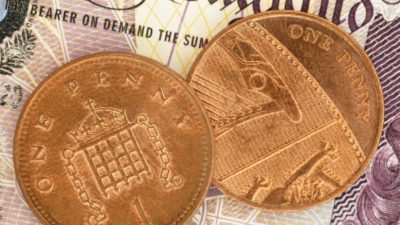Last summer, the people of Ukraine were looking forward to a brighter future, with a far-reaching free trade agreement with the European Union practically in the bag.
But President Viktor Yanukovich, backed by the oligarchs of Russia and their fomenting of economic disruption, was having none of it — and in November, he ensured his place in the history books by refusing the sign the EU agreement in favour of closer ties with Russia.
Now that he’s apparently out of the way, new interim President Oleksandr Turchinov is trying to steer Ukraine firmly back towards Europe. But what’s the cost going to be?
Economic collapse
The Ukrainian economy is in a mess, to put it mildly, with the country’s shifting between favoured economic partners adding to the Soviet sphere’s traditions of bureaucracy and corruption in further hampering international trade.
The country’s fledging currency, the hryvnia, has slumped to its lowest level against the dollar since inception, and the National Bank of Ukraine is desperately trying to prop it up — it apparently spent $1.7bn in January alone on the task, and the country has imposed strict limits on overseas currency transactions.
But the hryvnia has still lost more than 10% of its value since November, and Ukraine’s people are clamouring for hard currencies as their faith in their own paper evaporates — euros and dollars are reportedly being flown into the country daily to keep the country’s retail banks going.
Things have eased a little, but only a week ago the cash machines were starting to dry up and credit-cards transactions were being refused.
Reserves running out
Ukraine is reportedly down to its last $17.8bn in currency reserves, with around $7bn in foreign debt needing to be serviced over the coming year — around $3bn of which is owed to the International Monetary Fund.
Back in December, Russia lined up a $15bn bailout for Ukraine as part of a trade agreement after the EU deal was scuppered, and to date $3bn of that has been handed over. But the next $2bn payment is now on hold, with Moscow waiting for the formation of a new government before it decides how to proceed.
And then there’s gas
Ukraine is currently heavily dependent on Russia for imports of gas, and forms a key route for the transport of the stuff to the EU — and Russia has been exploiting that fact to strengthen its political influence on the country. We’ve seen a number of cycles over the past few decades of Russia raising prices to levels Ukraine can’t pay, followed by various shady deals between the oligarchs and the situation apparently returning to normal — with a few nice profits undoubtedly trousered along the way in traditional fashion.
And gas had a lot to do with Ukraine’s withdrawal from its EU deal. By selling gas to Ukraine at cheap prices and having the ability to close the taps at any time, Russia wields considerable economic and political power. Breaking that hold and paying free market prices for gas would prove deeply unpopular with the Ukrainian people.
Poor infrastructure
The irony is that Ukraine has plenty of gas reserves of its own, but the country’s infrastructure is ramshackle and the development of its own gas industry would be very expensive. But helping financially could be a sound move for the EU — as well as helping free Ukraine from Russian supply threats, a friendly supplier on our Eastern borders wanting closer and closer ties to Europe would help reduce our own energy risk, too.
That’s longer term, and the key question now is how the Ukrainian economy is to be saved in the shorter term, and by whom.
IMF to the rescue
It’s looking increasingly like it will be the International Monetary Fund (IMF) providing financial succour, with even Russian finance minister Anton Siluanov hinting that he might back IMF intervention. The IMF has said it is poised to help as soon as an interim government is ready for discussions, but there will be a raft of economic reforms as part of the conditions.
Whoever comes up with the cash, it’s going to be expensive — President Turchinov has already suggested Ukraine will need $35bn over the next two years to avoid the possibility of defaulting on its debt.







